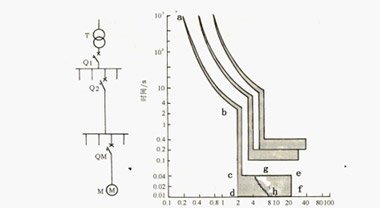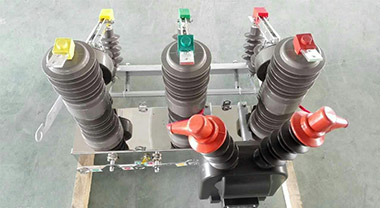Basic requirements for circuit breaker operating mechanism
Whether a circuit breaker can operate effectively and reliably depends to a large extent on the performance and quality of the operating mechanism. Therefore, depending on the circuit breaker, the operating mechanism equipped with it should meet the required nature and reliability, mainly as follows:
1. It should have sufficient closing function
In actual work, the energy of the operating mechanism will not remain at the rated value, but will vary within a certain range. According to the requirements of power related regulations, the lower limit is 80-85% of the rated value, and the upper limit is 110% of the rated value. That is to say, when the operating mechanism is at the lower limit, it can break the short-circuit current, and the upper limit At this time, the relevant parts should not be damaged due to excessive operating force. Moreover, when a short-circuit fault occurs in the power grid, the short-circuit current in the circuit can reach 40kA or even greater, and the electric power of the circuit breaker can reach several thousand Newtons. The operating mechanism must overcome such a huge electric power to close the circuit breaker. .
2. It should have the function of keeping the switch closed
In order to reduce the overall size of the circuit breaker and reduce energy consumption, the closing coil is designed as a short-time working system, allowing only a short time to pass the closing current. If the energization time is too long, the closing coil will be burned. This requires the operating mechanism to keep the circuit breaker in the closed position after the closing coil loses power.
3. Has a short opening time
Opening of the circuit breaker means that the circuit must be opened and an arc will occur. The greater the current that is broken, the harder the arc will be extinguished and the more severe the working conditions. When a short-circuit fault occurs, the short-circuit current is much larger than the normal load current. When the system is short-circuited, the system circuit behaves as an inductive circuit. Therefore, when the AC current crosses zero, the moving and static contacts of the circuit breaker separate instantly. The voltage cannot be changed suddenly, there will be a transient recovery voltage. In order to achieve the purpose of breaking the circuit, the operating mechanism must provide a certain opening speed, especially the just opening speed.
4. There must be an anti-jumping device
In order to avoid the phenomenon of multiple closings and openings after the circuit breaker is closed, mechanical or electrical methods should be adopted to prevent the circuit breaker from opening or closing arbitrarily after opening to reduce unnecessary actions.
5. There must be a linkage device
There is a linkage device in the operating mechanism to ensure the reliability of the circuit breaker, so that when the circuit breaker is in a state, it will not be affected by the misoperation of the operating mechanism. Generally, the operating mechanism should have the opening position interlock, low air pressure and High-pressure interlock, position interlock in spring mechanism, etc.




